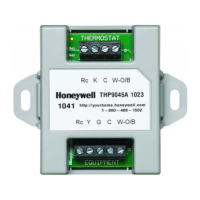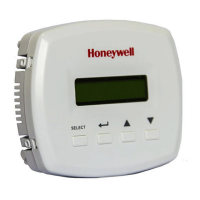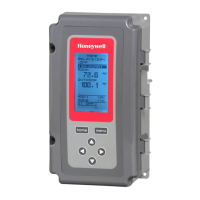Introduction
MAN0996_Iss 1_02/16 Touchpoint Plus
Pt. No. 3011M5044_EN 2 User Guide
1.4 TPPL General Warnings
1) The equipment specified in this manual is only to be installed by the Manufacturer’s trained personnel, or by
competent persons trained in accordance with the Manufacturer’s installation instructions.
2) Installation must be in accordance with the recognized standards of the appropriate authority in the country
concerned. Refer to local, national and company regulations.
3) Do not operate the Touchpoint Plus system or its components outside of their rated operating specification.
4) Touchpoint Plus must not be operated in Oxygen enriched atmospheres, i.e. greater than 25% v/v Oxygen.
5) All equipment containing a User Interface must be suitably protected from direct sunlight and rain.
6) Power Supply Fluctuations are not to exceed DC 18 – 32 V SELV Supply or ±10 % of nominal.
7) All versions of Enclosure apparatus are electrical Class 1, and must be connected to Protective Earth (Ground).
8) The Touchpoint Plus installation must include a means of isolating or disconnecting the input voltage supply. The
isolation or disconnection device must be conveniently located close to the system and be clearly labelled. For
an AC mains voltage supply, the isolation or disconnection device must disconnect both the line and neutral
poles, but maintain earth (ground) continuity.
9) The Touchpoint Plus input voltage supply must include over-current protection.
10) All cabling must be appropriately rated and approved in accordance with local, national and company regulations,
and suitable for the installation. Additionally, cabling must satisfy requirements defined in the manuals of
connected field devices, in particular if the field device is certified for use in a hazardous location.
11) All signal cables and interconnections must be shielded and the shields terminated only at the unified earth
(ground) bus bar situated inside the enclosure
12) All conduits and cable armour shall be bonded to protective earth (ground), and care must be taken to avoid
ground loops and to avoid contact with cable shielding.
13) Cable entry glands, blanking plugs, reducers, adaptors and breather devices must be suitably approved and
must not reduce the IP rating or protection levels. Items should not be used if there is a high risk of mechanical
damage to the equipment or enclosure.
14) Access doors and entry points must be kept closed when the system is energised in normal operation.
15) The TPPL Enclosures must be securely closed and the locking handle security screws must be fully tightened
during normal operation.
16) All equipment in this manual is rated to +2000 m (6562 ft) altitude maximum.
17) For safety reasons this equipment must be operated by qualified personnel only. Read and understand the
Instruction Manual completely before operating or servicing the equipment.
18) Touchpoint Plus systems may contain hazardous live terminals. Appropriate precautions should be taken during
operation, installation, and maintenance and servicing. Specifically, operators must have appropriate training and
experience to be aware of the hazards to which they may be exposed, and of measures to minimise risk to
themselves or other people.
19) The protection provided by TPPL may be impaired or lost if the equipment is installed or used in an incorrect,
unspecified or unauthorised way.
20) Be aware that extended exposure of a detector element to certain concentrations of combustible gases and air
can introduce stress to the element that may seriously affect its performance, and therefore recalibration should
be carried out or the sensor replaced, or both, after an alarm due to an indication of a high concentration.
21) When used in a Gas Detection summing up role, the gas reading may be higher than the actual concentration at
any one detector head location, or it may be the actual concentration at one specific detector head.
22) Exposure to some chemicals may degrade the sealing properties of materials used in the alarm relay.
23) Do not open TPPL enclosures or disconnect/reconnect equipment until power has been isolated and the area is
made safe / non-hazardous. This includes replacing backup batteries.
24) Substitution of any components may impair suitability for Class I, Division 2.

